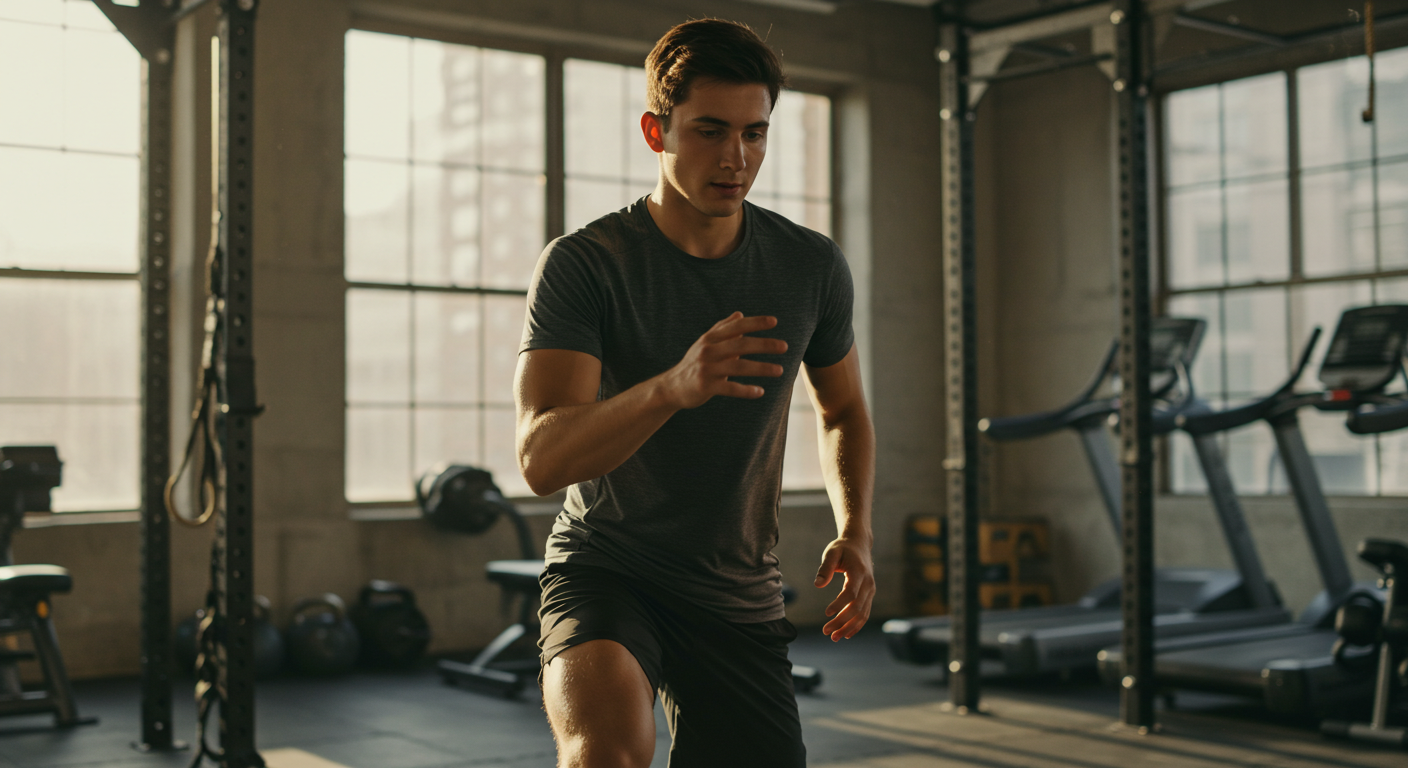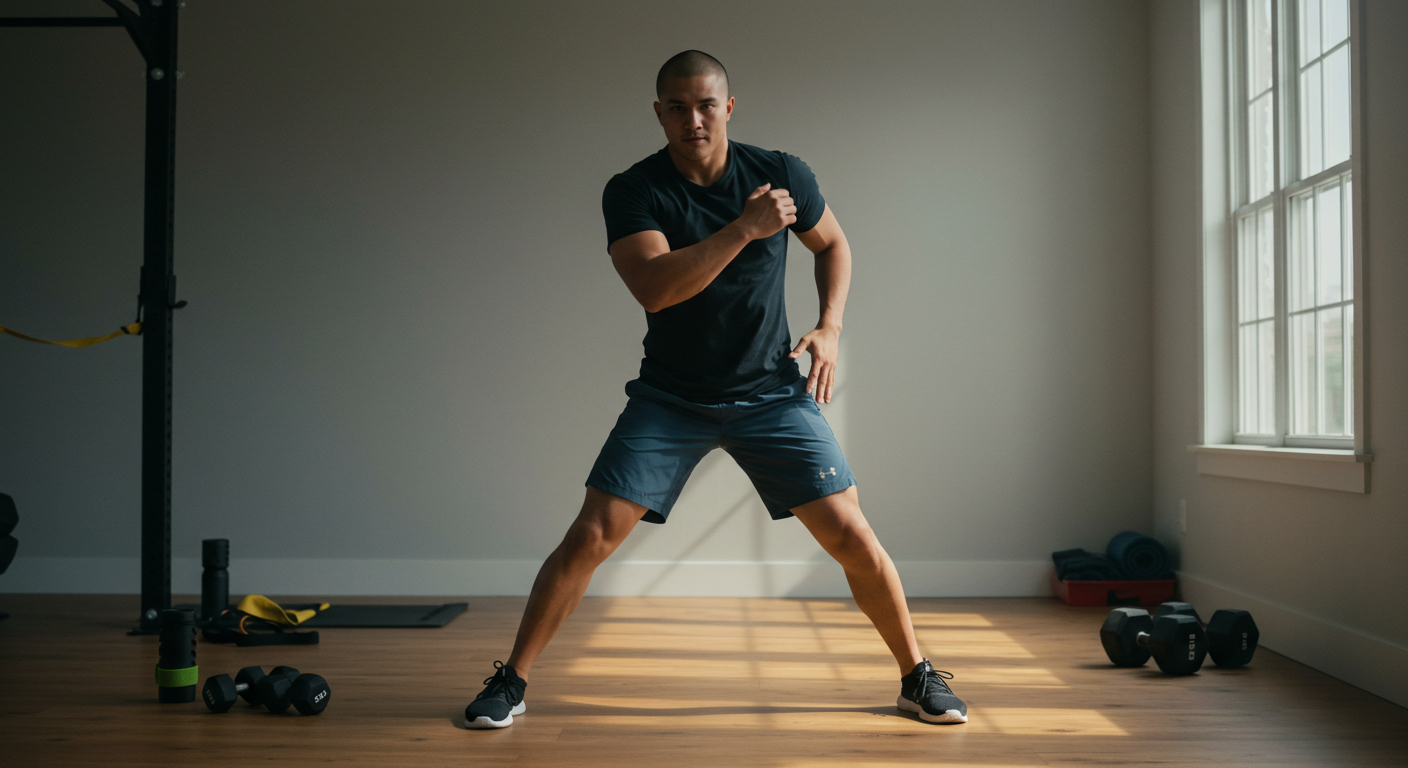What’s All the Fuss About Warming Up?
Have you ever wondered why athletes and fitness enthusiasts always seem to engage in peculiar stretches and movements before diving into a workout?
Whether you’re a seasoned gym-goer or someone who’s just starting, warming up is more than just an exercise in repetitive motions—it’s a crucial part of physical health and performance.
This ritual, oftentimes underrated, could hold the key to optimizing your workout and reducing the risk of injury.
So, let’s delve into the world of warm-ups and discover why they’re more important than you might think.
The Science Behind Warming Up
Warming up isn’t just a trend but a scientifically-backed practice that readies your body for physical exertion.
It increases your heart rate, pumping more blood and oxygen to muscle tissues, which prepares them for the work ahead.
Additionally, a warm-up routine can enhance joint mobility, neural responses, and muscle pliability.
| Aspect | Benefit | Explanation |
|---|---|---|
| Cardiovascular | Increases Heart Rate | Enhances blood flow, delivering more oxygen to muscles. |
| Muscular | Improves Flexibility | Warms up the muscles, making them more elastic. |
| Neurological | Boosts Coordination | Prepares the nervous system for physical activity. |
| Psychological | Reduces Stress | Focuses the mind and reduces anxiety. |
Each of these aspects contributes to better performance and, importantly, reduces the likelihood of cramps or strain during intense physical activity.
Types of Warm-Up Exercises

Warm-ups can vary significantly depending on the kind of activity you’re preparing for. Generally, they can be categorized into dynamic and static warm-ups.
Dynamic warm-ups include movements such as jumping jacks, lunges, or leg swings that keep the body moving to increase circulation and improve muscle elasticity.
Static warm-ups, such as bending and holding a stretch for a few seconds, focus more on flexibility and can be included at the end of a dynamic session.
Dynamic warm-ups are particularly beneficial for activities that require explosive strength, like sprinting or weightlifting, whereas static stretching can be helpful for cooling down, aiding in flexibility, and relaxation post-exercise.
“Give me six hours to chop down a tree and I will spend the first four sharpening the axe.” – Abraham Lincoln
The Risks of Skipping Warm-Ups

Skipping a warm-up isn’t just about potentially missing out on optimum performance; it can lead to more serious consequences like injuries.
When muscles aren’t adequately prepared for the strain of a workout, the risk of strains, sprains, and tears significantly increases.
Furthermore, bypassing the warm-up stage can lead to decreased performance—muscles may feel stiffer, slower, and less responsive, thus impairing strength and endurance.
1. Injuries like strains or tears.
2. Reduced performance efficiency.
3. Increased muscle stiffness.
4. Elevated risk of cramps.
These are just a few of the reasons you shouldn’t neglect your warm-up. Consider it an essential part of your health and fitness routine instead of an optional prelude to exercise.
Warm-Up Strategies for Various Sports
Different sports and activities require tailored warm-up routines.
For instance, basketball players might focus on agility drills, light jogging, and dynamic stretches such as side shuffles to prepare their bodies for quick movements.
Meanwhile, swimmers could benefit from dryland exercises, focusing on shoulder rotations and leg kicks to engage the upper and lower body.
Each sport has its unique demands, and thus, the warm-up strategies should align with the specific movements and intensity level you’ll encounter during the activity.
Not only does this prepare you better physically, but it also has psychological benefits—getting into the “zone” for your sport.
Understanding Active and Passive Warm-Ups
Warm-ups can also be classified into active and passive types. Active warm-ups involve physical movements that increase body temperature and heart rate.
Passive warm-ups, on the other hand, may involve external heat sources like a hot shower or an external heat pad to increase muscle temperature without direct exertion.
Both techniques are effective in their right but serve different purposes.
Active warm-ups are more suitable before engaging in a workout or competition, while passive warm-ups might be used in therapeutic settings or when recovery from an intense session is necessary.
Proper Warm-Up Duration
So, how long should you spend on warming up? The duration of a warm-up can vary depending on the intensity and duration of the activity you’re preparing for.
Generally, dedicating about 10 to 30 minutes is recommended, but this can be adjusted based on individual needs.
You can start with just 5 minutes if you don’t have much time:
Factors such as age, fitness level, and temperature of the environment may affect the optimal warm-up duration.
As a rule of thumb, your warm-up should leave you feeling slightly warm and prepared, without causing fatigue before the actual workout begins.
Breaking Down a Perfect Warm-Up Routine
Crafting a warm-up routine that suits your needs requires understanding of the mechanics of your intended activity. Let’s break down a sample routine for a typical gym session:
1. General Body Warm-Up: Start with 5-10 minutes of light cardio such as jogging or cycling to elevate your heart rate.
2. Dynamic Stretching: Follow with dynamic stretches like leg swings, arm circles, and torso twists.
3. Sport-Specific Warm-Up: Incorporate movements related to your specific workout, e.g., bodyweight squats if you’re focusing on legs.
4. Mental Preparation: Spend a minute or two focusing on your breathing to steady your mind before diving into your primary workout.
How you structure your routine can make a significant difference in your performance and recovery. Tailor it to align with your goals and the day’s workout plan.
Conclusion
Incorporating a warm-up into your workout routine is akin to setting the stage for success. It’s more than just a sequence of gestures; it’s your body’s way of getting into the rhythm of movement, optimizing function, and safeguarding against injury.
Whether you’re an elite athlete or a casual exerciser, never underestimate the power of a good warm-up.
As we’ve seen, it prepares body and mind alike, enhancing the quality of your performance and the enjoyment of your activities.
So next time you tie up your sneakers, remember that a few extra minutes spent on warming up could make all the difference.
FAQ – Common Questions
How long should I spend warming up?
Typically, 10-30 minutes is sufficient, but it’s important to adjust based on your fitness level and the activity ahead.
Can I skip the warm-up if I’m short on time?
It’s not recommended, as warming up is crucial for preventing injuries and optimizing performance.
What if my muscles are sore from a previous workout?
Light stretching and an easy warm-up can help alleviate soreness by increasing blood flow to the muscles.
Are there activities that require no warm-up?
Most physical activities benefit from a warm-up, though less intense tasks may require only minimal preparation.
Can warming up improve my workout results?
Yes, it prepares both the body and mind, enhancing performance, coordination, and focus during the workout.

